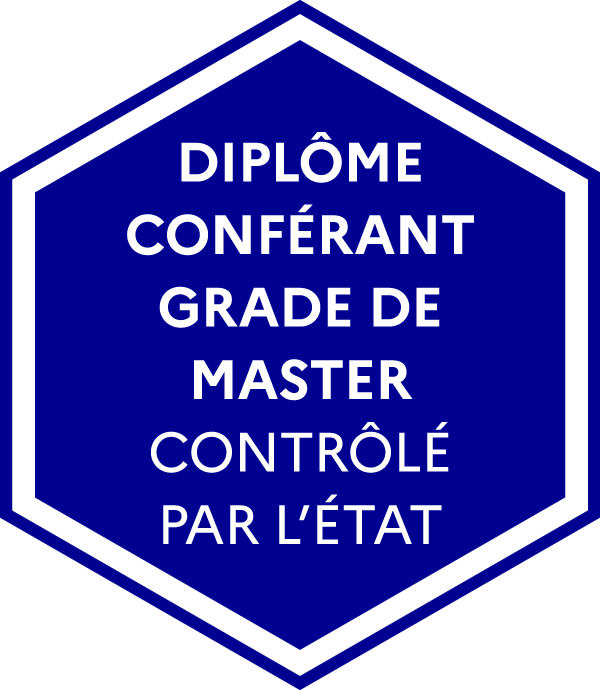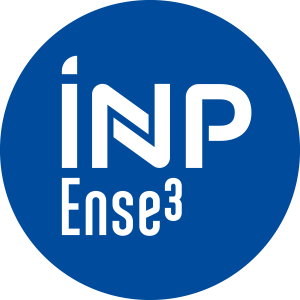Number of hours
- Lectures 21.0
- Projects -
- Tutorials 19.0
- Internship -
- Laboratory works 18.0
ECTS
ECTS 5.0
Goal(s)
This module is divided into two parts. The first one focuses on the electromechanical power generation means connected directly or indirectly to the power grids. The second one deals with power electronics structures associated with the conversion of renewable energy (either at variable speed or based on static energy conversion).
The first part of the module is to provide the knowledge to model and control the energy conversion based on electromechanical generators (generator for dam, wind turbine, tidal power plant, etc.). The content of this technical course is very clearly oriented towards Electrical Engineering. In terms of know-how, the skills acquired during classes are in the field of modeling and control of rotating machines (steady state and transient) at constant and variable speed.
The second part is about static converters. It involves understanding the principle of switching power supply, knowing how to choose a power electronics structure depending on the application and learning some design principles.
Laurent GERBAUD
Content(s)
Course and tutorials, 44h
Energy Conversion Part
- Introduction and principle of energy conversion.
- Creation of rotating fields.
- Modeling electromechanical generators for their control: synchronous machines. Associated tutorials: Rance tidal power plant; vector and small signals modeling of synchronous machines.
- Modeling electromechanical generators for their control: asynchronous machines.
- Control of electric generators in isolated or connected grids and notions of static and dynamic stability. Associated tutorial: Dynamic stability of a power plant connected to the network, calculation of the critical fault clearing time.
- Control of energy production systems based on variable speed electric generators. Associated tutorial: modeling and study of operating points of wind turbine based on a doubly fed induction machine.
Power Electronics Part
- Introduction.
- DC-DC conversion. Associated tutorial: Chopper
- Buck converter (basic principle of power electronics)
- Boost converter (application to PV production)
- Switched mode power supply (isolated DC-DC): example of the Flyback
- Technology Bases and Design Considerations
- Reversing power flows: reversible choppers.
- DC-AC conversion. Associated tutorial: PWM inverter
- Single-phase full wave inverter
- Three-phase full wave inverter
- Principle of pulse width modulation (scalar and vector PWM)
- AC-DC conversion. Associated tutorial: IFA 2000 rectifier
- Single-phase diode rectifier.
- Three-phase rectifier
- Based on thyristors
- Three phase rectifier
- Sinewave current input (PFC)
- Last tutorial: subject of synthesis and / or study of a particular component
Practical Work - 16h
- Wind energy production and ancillary services,
- Generation power plant: hydraulic application in normal isolated mode, or connected to the grid, in fault mode.
- Power electronics structures (chopper, rectifiers, and inverters). PWM applied to low frequency EMC filtering, electrochemical storage.
- Electric circuits, basis in mathematics.
- Basic knowledge of the operation of energy networks and the conversion of static and electromechanical energy. Knowledge in electrical machines: synchronous machine, rotating magnetic fields, asynchronous machine (suggested).
- Knowledge in power electronics: basic electrical circuits chopper/rectifier (mandatory) and power electronics basic (suggested).
Session normale / 1st session
Contrôle continu / Continuous assessment(CC) :
- Evaluation lors des travaux dirigés associés aux cours sur la conversion d’énergie électromécanique et statique sous la forme de rendu de rapport et note de comportement en classe / Evaluation during tutorials associated with courses on electromechanical and static energy conversion in the form of reports and class behavior evaluation
- Rapports et présentation durant les séances de travaux pratiques (trois rapports et une présentation), pour partie sur le cours et les travaux dirigés de conversion d’énergie et pour partie sur ceux d’électronique de puissance / Reports and presentation during the practical sessions (three reports and a presentation), partly on the course and tutorials of energy conversion and partly on those of power electronics
Contrôle terminal / Final exam (CT) :
2h examen écrit, pour partie sur le cours et les travaux dirigés de conversion d’énergie et pour partie sur ceux d’électronique de puissance /
2h written exam partly on the course and the tutorial on energy conversion and partly on those on power electronics
Session de rattrapage / 2nd session
En session de rattrapage, la note obtenue remplace le contrôle terminal initial. Cette épreuve peut être un nouvel examen écrit ou une épreuve orale en fonction du nombre d’étudiants au rattrapage. Le contrôle continu n'est pas rattrapable.
The evaluation of the second session replaces the initial final exam (CT). This catch-up test may be a new written examination or an oral test depending on the number of students. No retake for CC.
EN 60% + ER 40%
DS de 3h. Plus précisément, 1,5h sur la partie J.-L. Schanen et 1,5h sur la partie V. Debusschère - L. Gerbaud
The exam may be taken in french or in english 

The course exists in the following branches:
- Curriculum - Master inter SGB - Semester 8 (this course may be followed in french or in english

 )
) - Curriculum - Master's Degree in Engineering SEM - Semester 8 (this course may be followed in french or in english

 )
)
Course ID : 4EUS4COE
Course language(s): 

You can find this course among all other courses.
- Chatelain, J. (1989). Machines électriques (Vol. 10). PPUR Presses polytechniques.
- Kundur, P. (1994). Power system stability and control (Vol. 7). N. J. Balu, & M. G. Lauby (Eds.). New York: McGraw-hill.
- Ferrieux, J. P., & Forest, F. (1987). Alimentations à découpages, convertisseurs à résonnance. Masson.
- Laverdure, N. (2005). Sur l'intégration des générateurs éoliens dans les réseaux faibles ou insulaires (Doctoral dissertation, Institut National Polytechnique de Grenoble-INP).
- Teninge, A. (2009). Participation aux services système de parcs éoliens mixtes: application en milieu insulaire (Doctoral dissertation, Institut National Polytechnique de Grenoble-INP).
French State controlled diploma conferring a Master's degree




